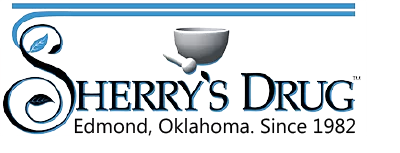DHEA and Testosterone Replacement in Your Body
DHEA chemically referred to as Dehydroepiandrosterone, is a multi-functional adrenal hormone and is produced by the adrenal glands. It acts on the androgen receptor both directly and through its metabolites. These include androstenediol and androstenedione, both that can undergo further conversion to produce the androgen testosterone and the estrogens, estrone, and estradiol. DHEA levels typically peak by the time people are in their 20’s and decline with age. Do our hormones decline as we age or do we age as our hormones decline??? The gradual decline in the body’s DHEA levels correlate with
- Loss of muscle mass
- A decrease in muscle tone
- Decreased bone density
- A decline in immune system function
- Increase in symptoms of depression
- Decline in libido
- Increase in abdominal fat
DHEA has been proven to help with Aging, Depression, Menopause, Obesity, Osteoporosis, and Sexual Dysfunction and Bone Density. DHEA is often called the Hormone of Youth and considered a longevity hormone.
In the female, Testosterone is manufactured by the developing follicle in the premenopausal or younger woman and by the Adrenal glands minutely in the older woman or post-menopausal woman.
Testosterone is not all about having big muscles and undesirable behavior. It is a very important and crucial hormone in both men and women. We find receptors for Testosterone in the testes in the male and adrenal glands in abundance. Testosterone is located in almost every tissue in the body including the brain and cardiovascular system. Therefore as we age symptoms of low testosterone are associated with
- Decreased brain function (memory and focus)
- Sexual dysfunction
- Muscle wasting of lean tissue
- Decreased bone formation by osteoblasts
- Increase in hip fracture
- The increase of body abdominal fat
- Increase in blood pressure
- Increase in depression and moodiness
- Increase in inflammation
- Increase in risk of cancer
- Increase in mortality
- A decrease in stamina and performance
Andropause or male Menopause is the term given to the decline in Testosterone production. This decline in available testosterone or “free testosterone” is a lethal disease.
Dr. Ron Rothenberg, MD, FACEP, Diplomate, American Board of Anti-aging/Regenerative Medicine, Board Certified, American Board of Emergency Medicine, Founder-California HealthSpan Institute, San Diego, CA. Has written and extensive Physician Guide for the “Nuts and Bolts” of Preventive/Regenerative Medicine. The name of this powerful book if FOREVER AGELESS: ADVANCED EDITION, Also in this book is a layman’s guide to feeling sexier, thinking smarter and having more energy. Prostate cancer does not come from Testosterone replacement in men. On the January 2000 issue of Mayo Clinic Proceedings, Dr. John Morley states “ There is no clinical evidence that the risk of either prostate cancer or BPH (Benign Prostatic Hypertrophy increases with Testosterone replacement.” Do 20-year-old men with sky-high Testosterone get Prostate Cancer or do 80-year-old men with low levels of Testosterone develop prostate cancer???? You be the judge. Do your own research of the literature.
Why does bone loss occur? Could it be not enough exercise or poor nutrition or maybe taking prescription drugs that damage bone? Drinking alcohol and smoking certainly damage healthy bone formation. DHEA, Testosterone, and HCG (known as human growth hormone) declines as we age. These are the hormones that create the type of bone cells that build up bone in both men and women. In the mid-thirties when androgen levels start to decline bone loss begins. Donor tissue is hormonally sensitive tissue. Many studies show that by 40 both men and women are losing bone at about 0.5% per year. For women, the rate of bone loss is increased 10 times due to menopause. Before the age of sixty, many women can lose a third of their total bone mass.
Bone loss occurs as we age and our hormones decline!
Bone is active, living tissue, changing, developing, growing, and eventually shrinking. Each year about 25% of a typical bone in your body is dismantled (resorption) and then replaced. Your bones are in transformation just like the rest of you. The remodeling of your bone is carried out by 2 specialized teams of cells. The Osteoclasts are the cellular demolition crew, dissolving tiny areas of bone tissue so that the calcium it contains can be moved into the bloodstream. The reconstruction crew, the osteoblasts, is just as vigorously building new bone every day of your adult life by depositing calcium phosphate on its new protein framework. If too many minerals are taken out without adequate replacement bone density decreases and this is called OSTEOPOROSIS. Exercise is needed and good muscle mass which needs Testosterone and DHEA is needed to strengthen the new bone that is being formed daily.
- For proper bone health consider the following in your daily health maintenance program.
- Have a bone scan done to assess your bone health and repeat every 2 years.
- Assess your hormone levels thru either saliva testing or proper blood test.
- Powdered calcium in with capsules and or straight powder might be more absorbable.
- Vitamin D-3 known as a pro-hormone taken in 5,000 to 10,000 units per day. A prescription is available in 50,000 units taken once a week.
- DHEA liquid for sublingual use at 10 mg per day
- Multi-minerals especially magnesium glycinate and zinc gluconate in a complex along with other essential vitamins
- Proper levels of Testosterone, Progesterone, and Estriol
- Make an appointment with a qualified health practitioner to guide you in making proper decisions.
- Eat nutrition based foods
- Exercise
